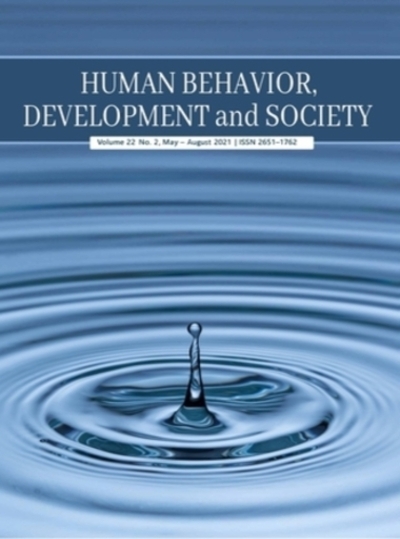Filipino College Students’ Perspectives on the Challenges, Coping Strategies, and Benefits of Self-Directed Language Learning in the New Normal
Main Article Content
Abstract
COVID-19 pandemic posed different challenges among teachers and learners worldwide. To add to literature regarding teachers’ and learners’ responses towards the pandemic, this study sought to determine the challenges and coping strategies of self-directed language learners. Anchored in the Zone of Proximal Development Theory, utilizing a case study design, eight randomly sampled college self-directed language learners from three purposively and conveniently sampled higher educational institutions in the Philippines were interviewed. Three teachers and two parents were also interviewed for triangulation. Emerging themes revealed that the self-directed language learners have difficulty consulting with teachers, logistical issues and poor Internet connections, and family commitment and distractions. To cope with these challenges, they developed time management and self-discipline, cultivated self-reliance, and prepared contingency plans. Moreover, they gained self-motivation and academic independence while employing self-directed language learning in the new normal. This implies a positive adaptation to a new normal way of studying.
Article Details

This work is licensed under a Creative Commons Attribution-NonCommercial-NoDerivatives 4.0 International License.
Copyright: Asia-Pacific International University reserve exclusive rights to publish, reproduce and distribute the manuscript and all contents therein.
References
Alaga, N.A.C. (2016). Media exposure for an enhanced communicative ESL instruction. Research Journal of English Language and Literature, 4(1), 144–153.
Anderson, L.W., & Pešikan, A. (2016). Task, teaching and learning: Improving the quality of education for economically disadvantaged students. Educational Practices Series 27. Educational Academy of Education.
Benson, P., & Voller, P. (2014). Autonomy and independence in language learning. Routledge.
Buenvinida, L.P., Tan, C.S., Rodriguez, M.T.M., Lapie, L.P., & Salandanan, F.H. (2021-forthcoming). Stress and anxiety of the college of teacher education students and their motivation to learn: An input to an intervention program. Journal of Education, Psychology, and Humanities, 4(1). Adventist University of the Philippines.
Creswell, J. (2007). Data analysis and representation. In J. Creswell (Ed.), Qualitative inquiry and research design: Choosing among five approaches. Sage.
Curry, N., Mynard, J., Noguchi, J., & Watkins, S. (2017). Evaluating a self-directed language learning course in a Japanese university. International Journal of Self-Directed Learning, 14(1), 17–36.
Daguay-James, H., & Bulusan, F. (2020). Metacognitive strategies on reading English texts of ESL freshmen: A sequential explanatory mixed design. TESOL International Journal, 15(1), 20–30.
Deita, J. D. G. L., & Posecion, O. T. (2019). Adjudicating the utilization of metacognitive, affective and social language learning strategies by preservice learners of teacher education institutions in Western Visayas, Philippines. Journal of Education and Practice, 10(35), 22–34.
Dimaculangan, N. G., & Dimaculangan, M. C. D. (2018). A look into EFL learning issues in ESL ecology. International Journal of Technology and Inclusive Education, 7(2), 1285–1294.
Galang, A. D. (2020). Revisiting the four linguistic macro skills’ contemporary nature and their possible new normal online pedagogical delivery in Philippine public senior high schools. In K. A. P. Dewi PF (Ed.), New normal: Idealism and implementation in Indonesia and the Philippines (pp. 150–174).
Garcia, R., Tan, R. D., Florendo, J., & Santos, N. (2020). Student-centered learning in general education in a private university in Manila: An analysis. Cosmos an International Journal of Art & Higher Education, 9(2), 16–21.
Haidari, S. M., Yelken, T. Y., & Akay, C. (2019). Technology-enhanced self-directed language learning behaviors of EFL student teachers. Contemporary Educational Technology, 10(3), 229–245.
Hardan, A. A. (2013). Language learning strategies: A general overview. Procedia-Social and Behavioral Sciences, 106, 1712–1726.
Hromalik, C. D., & Koszalka, T. A. (2018). Self-regulation of the use of digital resources in an online language learning course improves learning outcomes. Distance Education, 39(4), 528–547.
Huei-Ju, S. (2018). Promoting language learners' awareness of autonomy through goal setting--An alternative approach of assessing goal setting effects. English Language Teaching, 11(10), 52–65.
Islam, A., Barna, S.D., Raihan, H., Khan, N.A., & Hossain, T. (2020). Depression and anxiety among university students during the COVID-19 pandemic in Bangladesh: A web-based cross-sectional survey. PLOS ONE, 15(8): e0238162.
Knowles, M. S. (1975). Self-directed learning: A guide for learners and teachers. Follett Publishing Company.
Lai, C., Li, X., & Wang, Q. (2017). Students’ perceptions of teacher impact on their self-directed language learning with technology beyond the classroom: Cases of Hong Kong and US. Educational Technology Research and Development, 65(4), 1105–1133.
Marquez-Leccio, B.J. (2016). Self-directed learning: Teacher and learner. International Education & Research Journal, 2(5), 108–109.
McLeod, S. (2019). The zone of proximal development and scaffolding. Simply Psychology. https://www.simplypsychology.org/Zone-of-Proximal-Development.html
Merriam, S.B. (1998). Qualitative research and case study applications in education: Revised and expanded from case study research in education. http://eds-courses.ucsd.edu/tep288a/shortbook.pdf
Miles, M.B., & Huberman, A.M. (1994). Qualitative data analysis: An expanded sourcebook (2nd ed.). Sage Publications.
Niv, Y. (2019). Learning task-state representations. Nature Neuroscience, 22(10), 1544–1553. https://www.ncbi.nlm.nih.gov/pmc/articles/PMC7241310/
Pathan, H., Memon, R. A., Memon, S., Khoso, A. R., & Bux, I. (2018). A critical review of Vygotsky’s socio-cultural theory in second language acquisition. International Journal of English Linguistics, 8(4), 232.
Richter, S. (2012). Learning tasks. In N.M. Seel (Ed.) Encyclopedia of the sciences of learning. https://doi.org/10.1007/978-1-4419-1428-6_342
Saks, K., & Leijen, A. (2014). Distinguishing self-directed and self-regulated learning and measuring them in the e-learning context. Procedia - Social and Behavioral Sciences, 112, 190–198.
Saleh, S.A.M. (2018). Language learning strategies for classroom application. https://educatorpages.com/site/ EFL/pages/language-learning-strategies-for-classroom-application
Schweder, S. (2019). Mastery goals, positive emotions and learning behavior in self-directed vs. teacher-directed learning. European Journal of Psychology of Education, 35(3), 205-223
Sert, N., & Boynuegri, E. (2017). Digital technology use by the students and English teachers and self-directed language learning. World Journal on Educational Technology: Current Issues, 9(1), 24–34.
Shi, H. (2017). Learning strategies and classification in education. Institute for Learning Styles Journal, 1(1), 24–36.
Traga Philippakos, Z. A. (2020). Developing strategic learners: Supporting self-efficacy through goal setting and reflection. The Language and Literacy Spectrum, 30(1), Article 1.
Vygotsky, L. S. (1978). Mind in society: The development of higher psychological processes. Harvard University Press.


